
Unit 9: Blood Vessels
134
Lecture 1 - Atherosclerosis
Epidemiology of Atherosclerosis
Risk factors for atherosclerosis
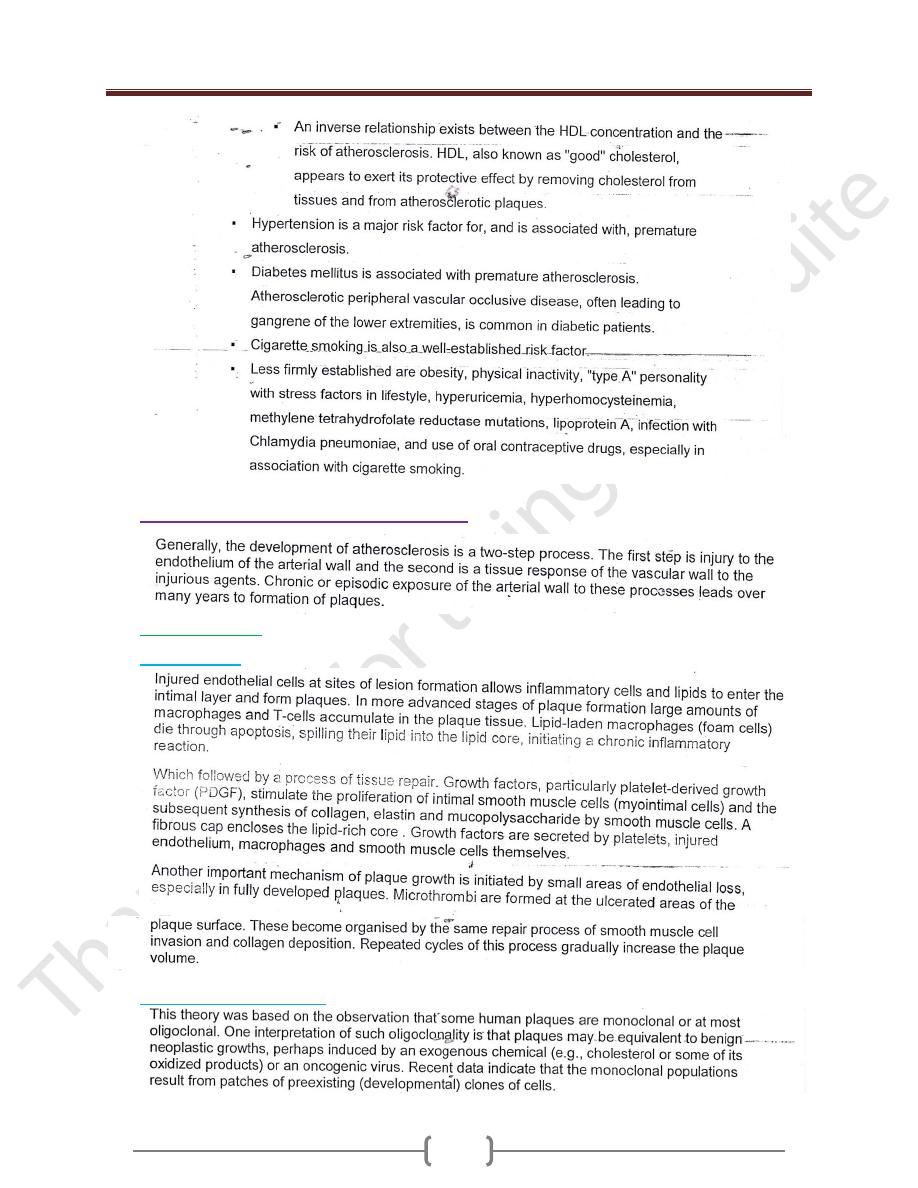
Unit 9: Blood Vessels
135
Pathogenesis (How do lesions develop?)
Many theories:-
Injury Theory
Oligoclclonality of Lesions
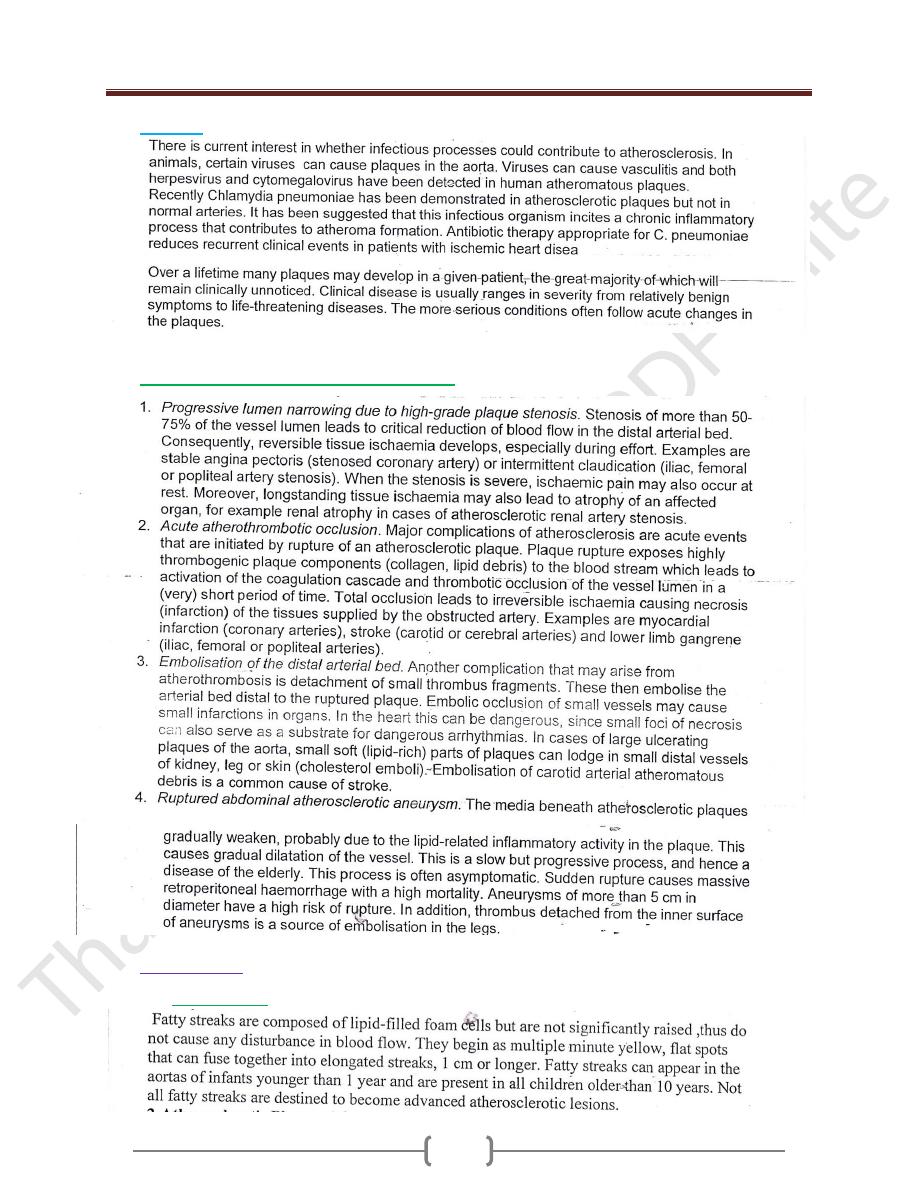
Unit 9: Blood Vessels
136
Infection
Clinical manifestations of atherosclerosis
Morphology
1) Fatty Streak
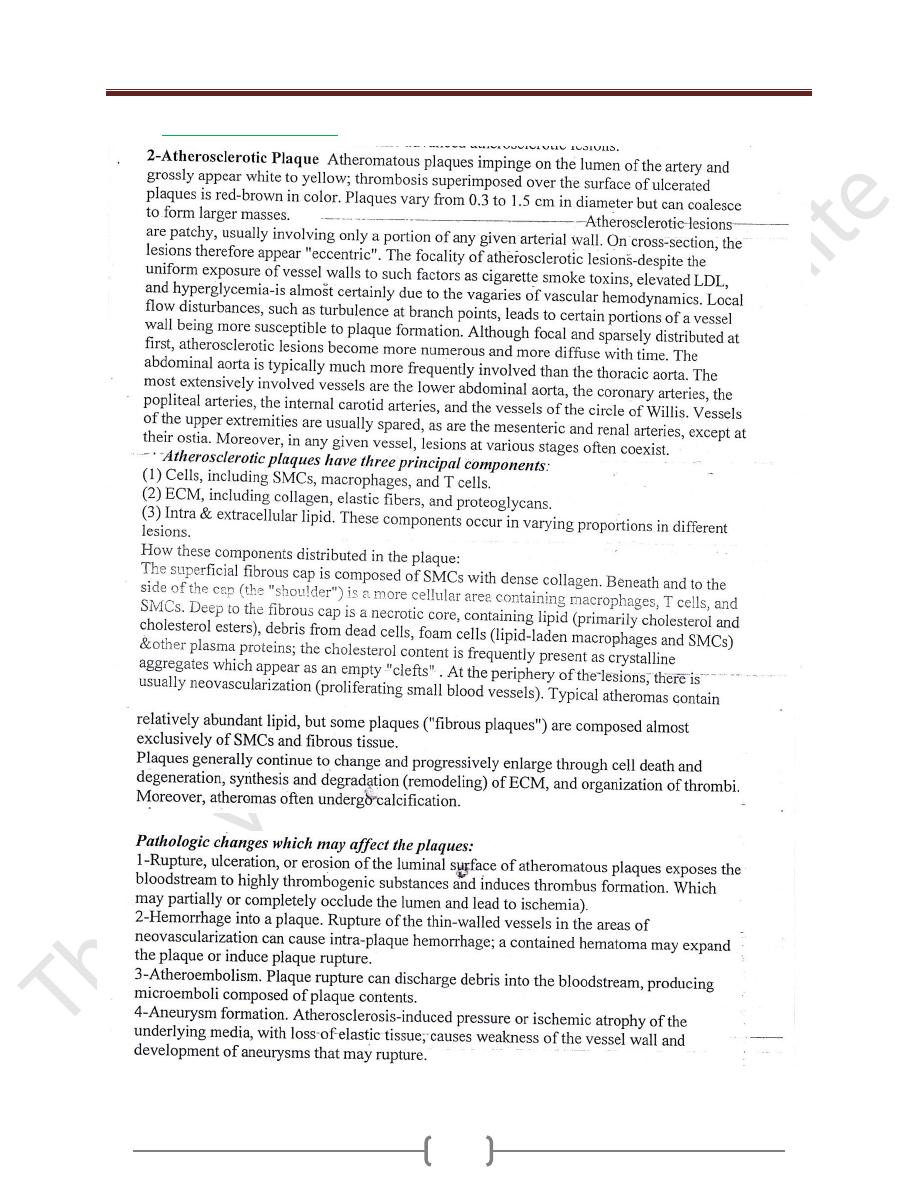
Unit 9: Blood Vessels
137
2) Atherosclerotic Plaque
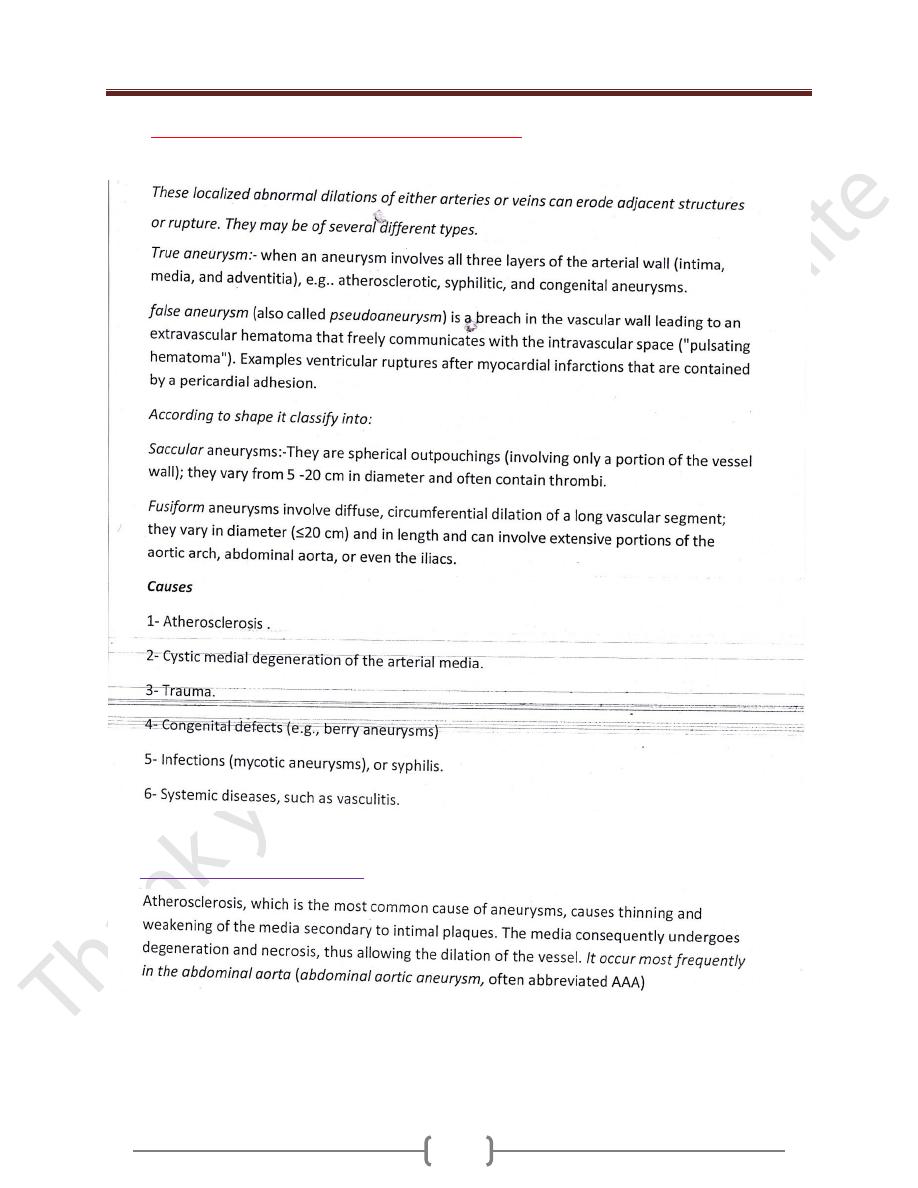
Unit 9: Blood Vessels
138
Lecture 2 - Aneurysms and Dissections
Abdominal Aortic Aneurysm
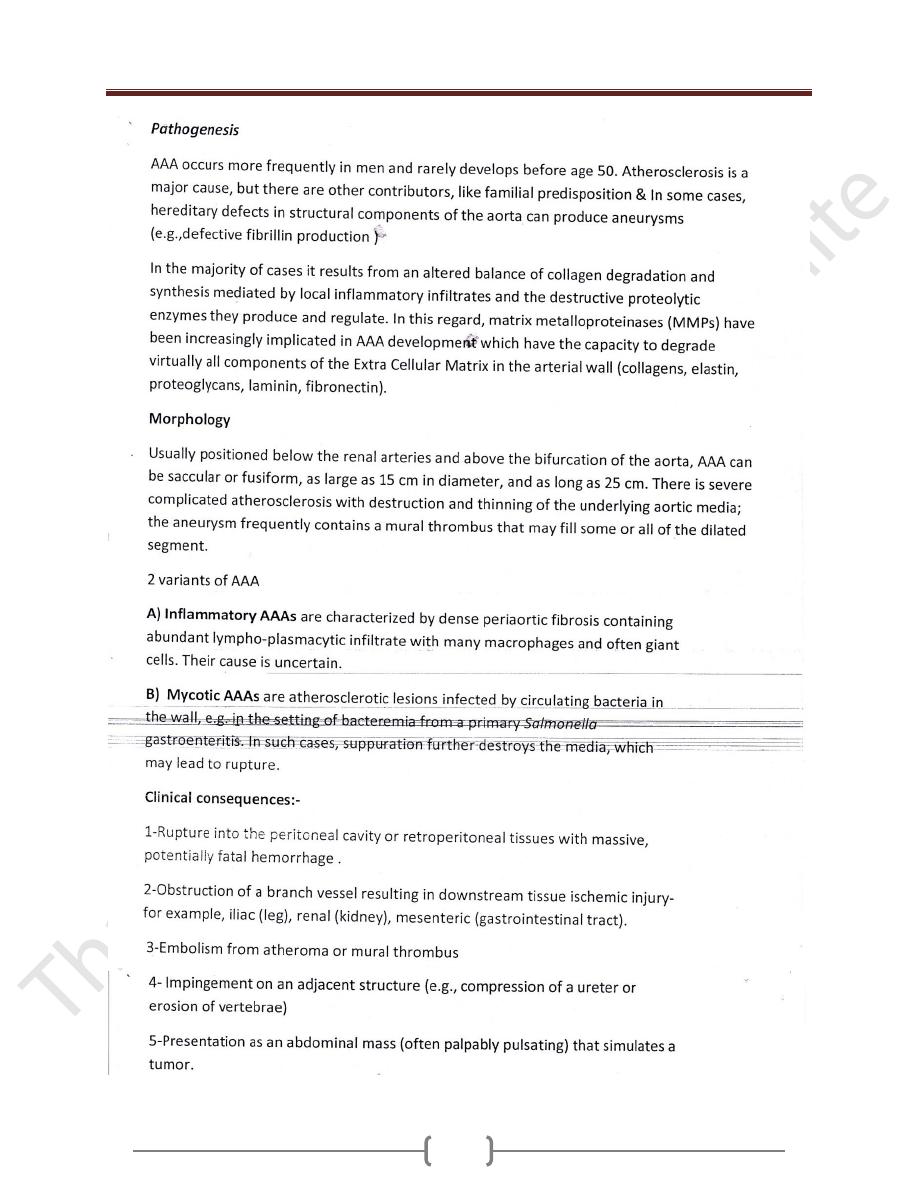
Unit 9: Blood Vessels
139
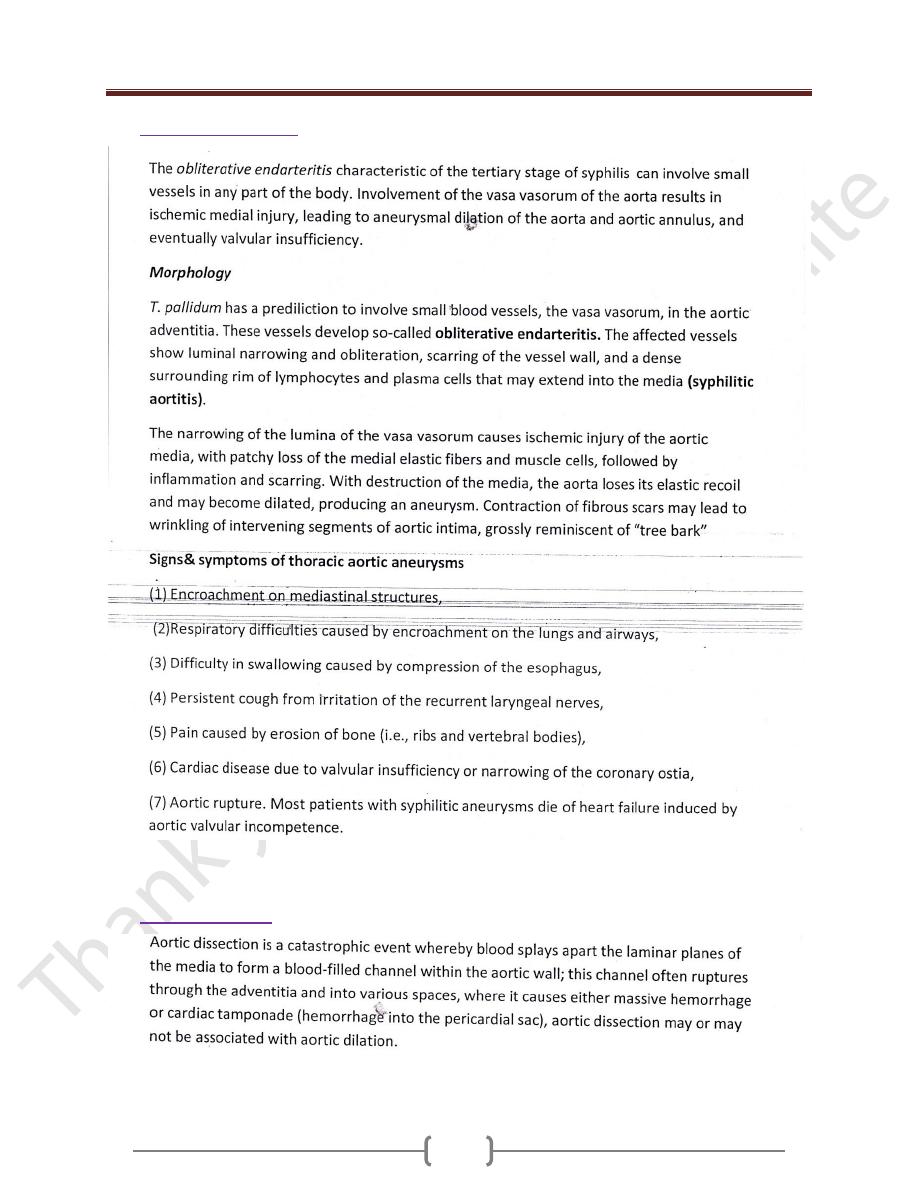
Unit 9: Blood Vessels
140
Syphilitic Aneurysm
Aortic Dissection
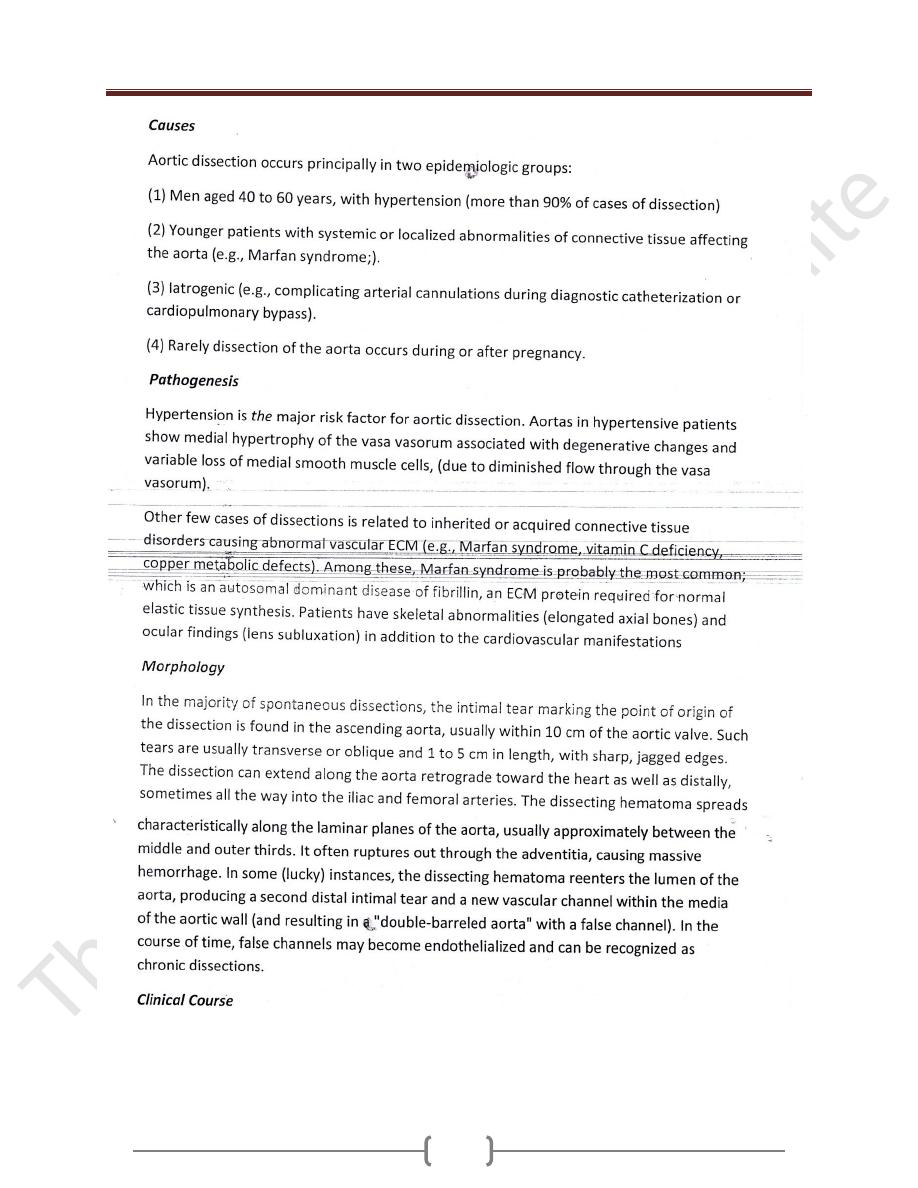
Unit 9: Blood Vessels
141
The risk and nature of serious complications of dissection depend strongly on the level of the
aorta affected. The most serious complications occur with dissections that involve the aorta
from the aortic valve to the arch.
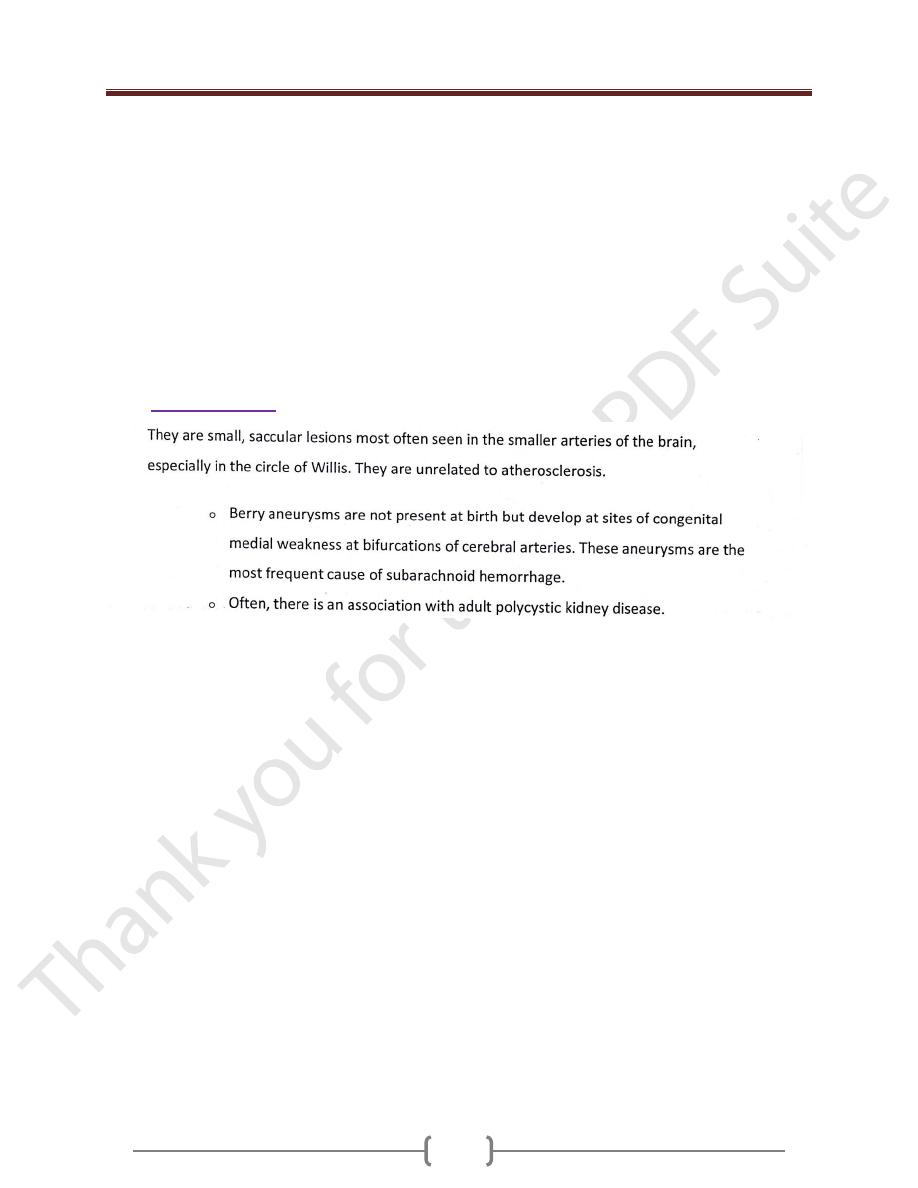
Unit 9: Blood Vessels
142
The classic clinical symptoms of aortic dissection are the sudden onset of pain, usually
beginning in the anterior chest, radiating to the back between the scapulae & moving downward
as the dissection progresses; the pain can be confused with that of myocardial infarction.
Types: two types
1) Type A dissections:-the more common proximal lesions, involving either the ascending aorta
called the DeBakey types I or DeBakey type II when involve both the ascending and
descending aorta.
2) Type B dissections distal lesions not involving the ascending part and usually beginning distal
to the subclavian artery (DeBakey type III).
Berry aneurysm
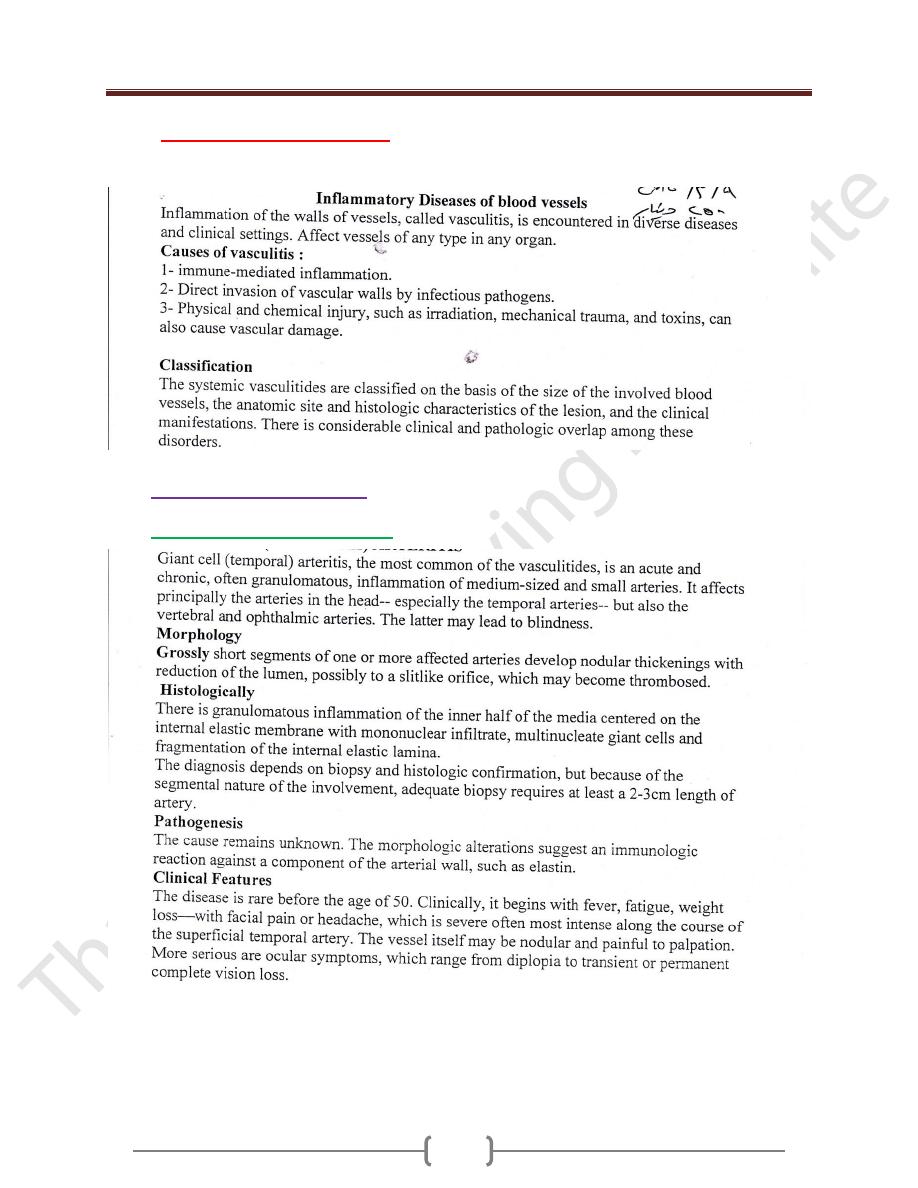
Unit 9: Blood Vessels
143
Lecture 3 - Vasculitis
Noninfectious Vasculitis
Giant Cell (Temporal) Arteritis
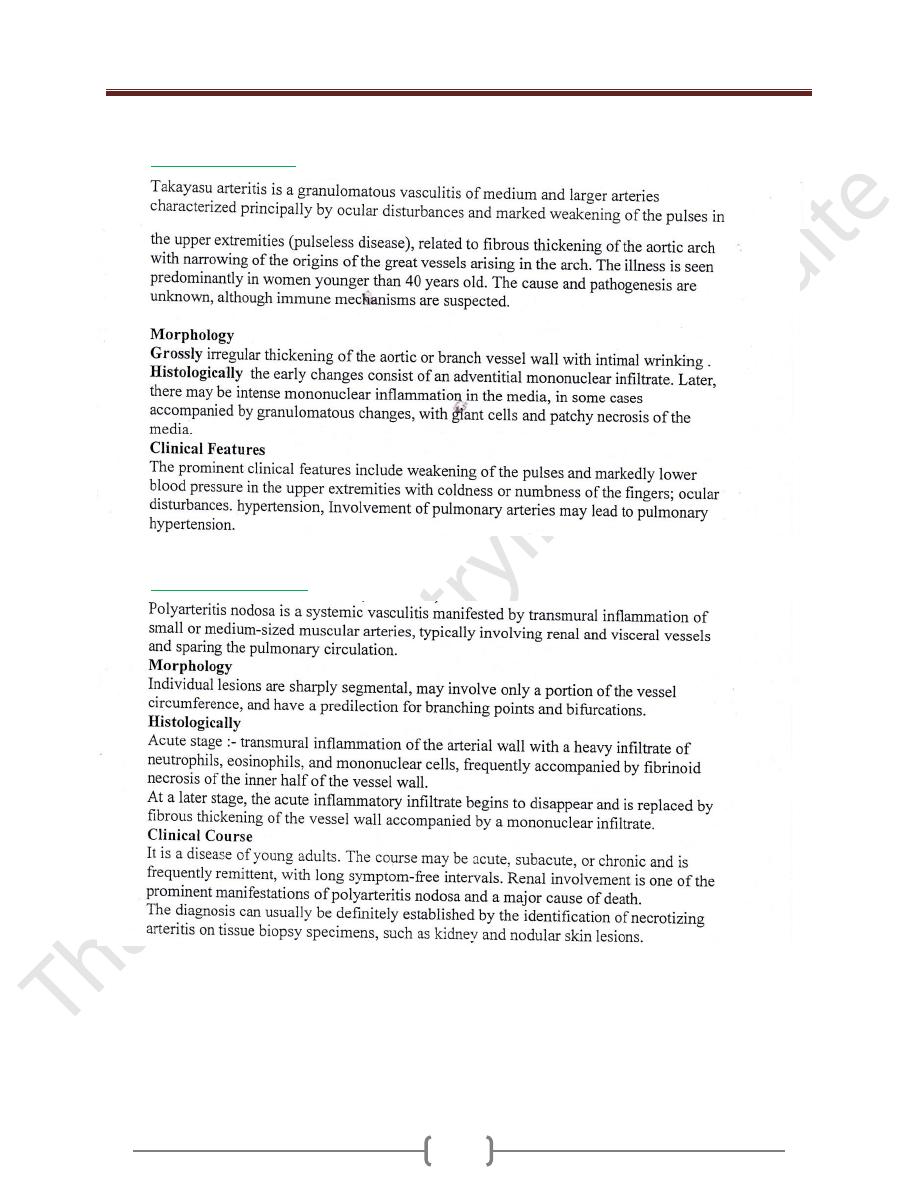
Unit 9: Blood Vessels
144
Takayasu Arteritis
Polyarteritis Nodosa
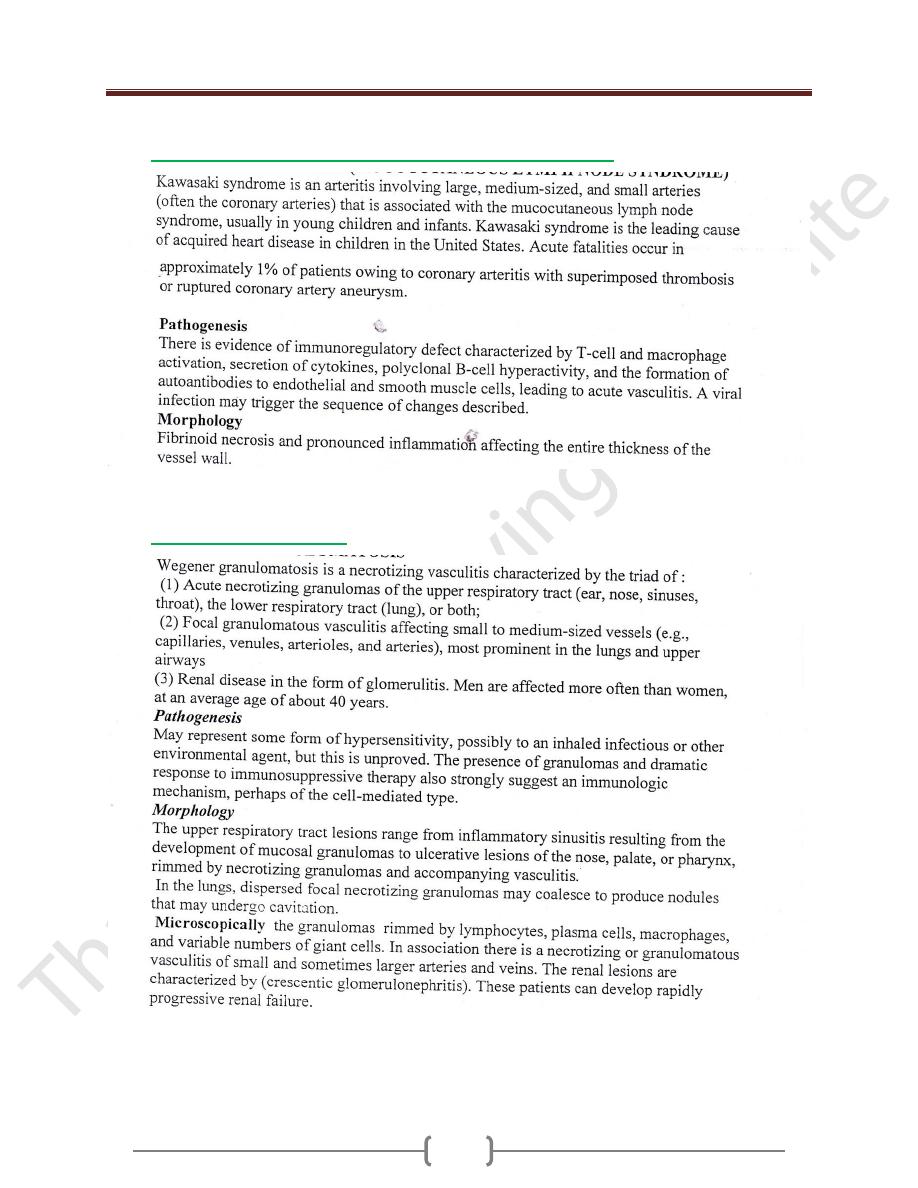
Unit 9: Blood Vessels
145
Kawasaki Disease (Mucocutaneous Lymph Node Syndrome)
Wegener Granulomatosis
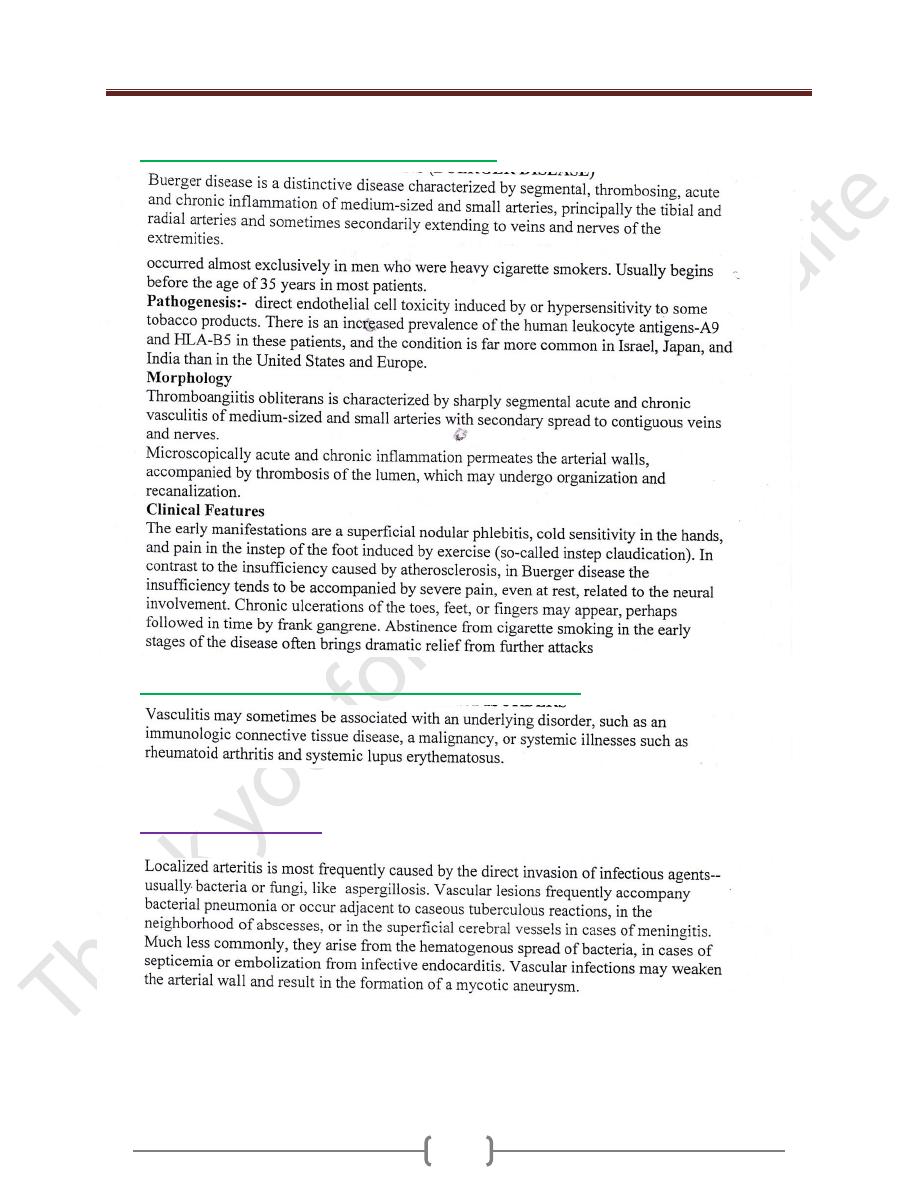
Unit 9: Blood Vessels
146
Thromboangiitis Obliterans (Buerger Disease)
Vasculitis Associated with Other Noninfectious Disorders
Infectious Vasculitis
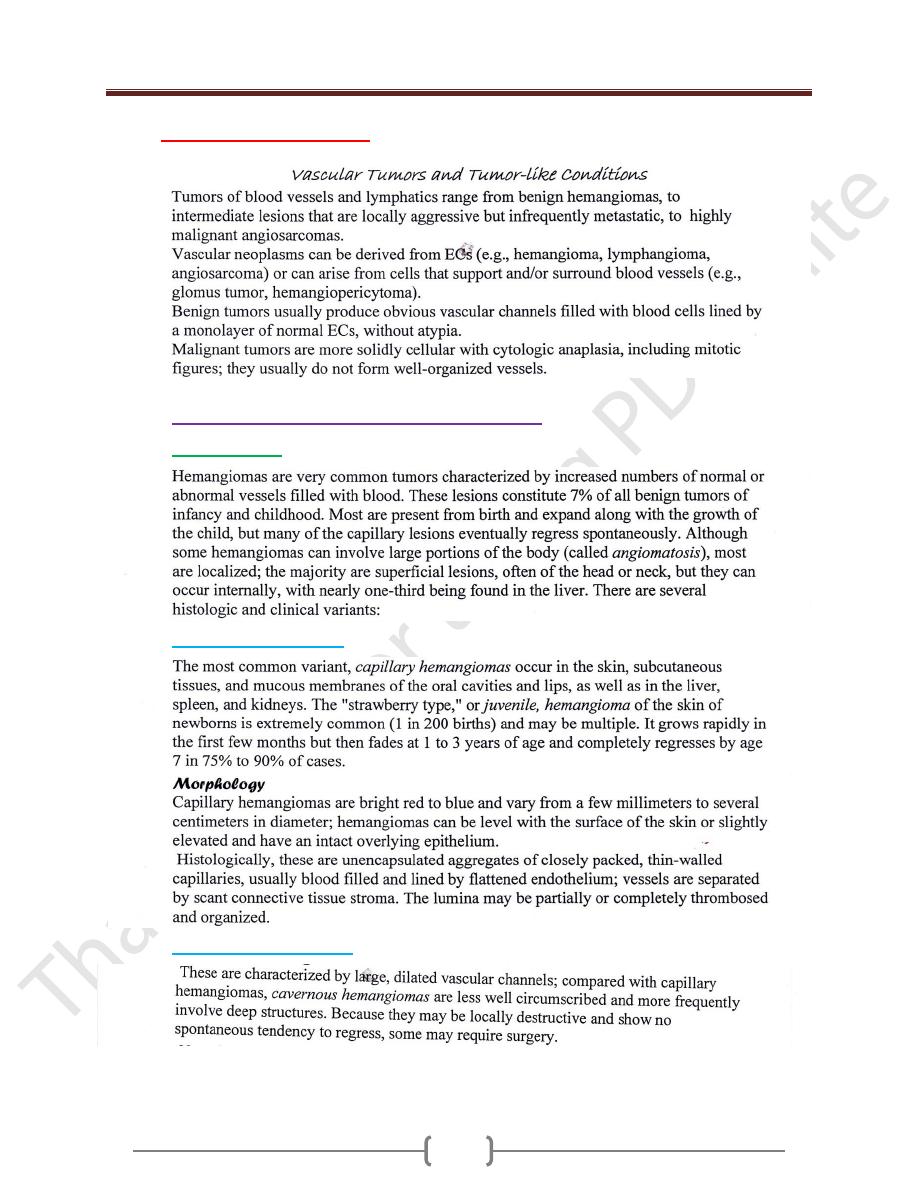
Unit 9: Blood Vessels
147
Lecture 4 - Tumors
Benign Tumors and Tumor-Like Conditions
Hemangiomas
Capillary Hemangiomas
Cavernous Hemangiomas
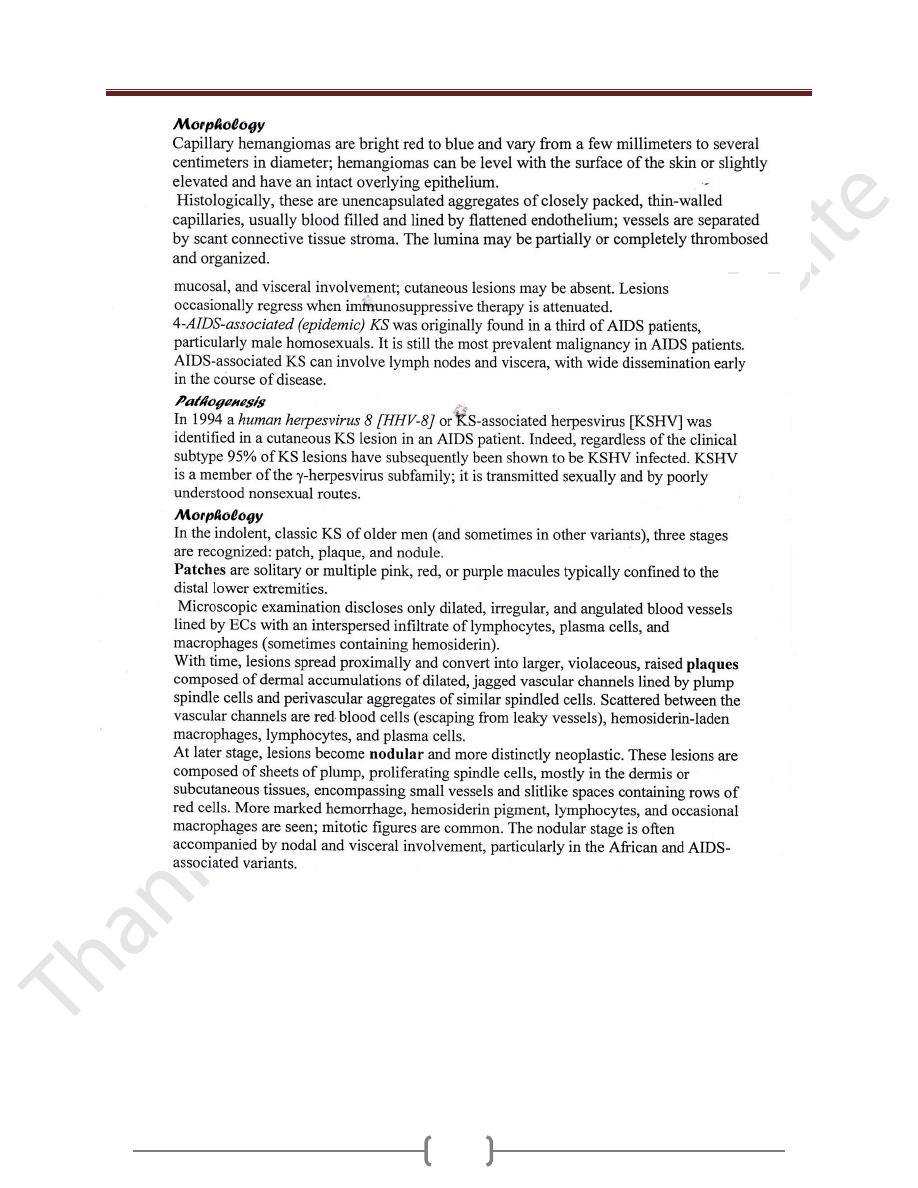
Unit 9: Blood Vessels
148
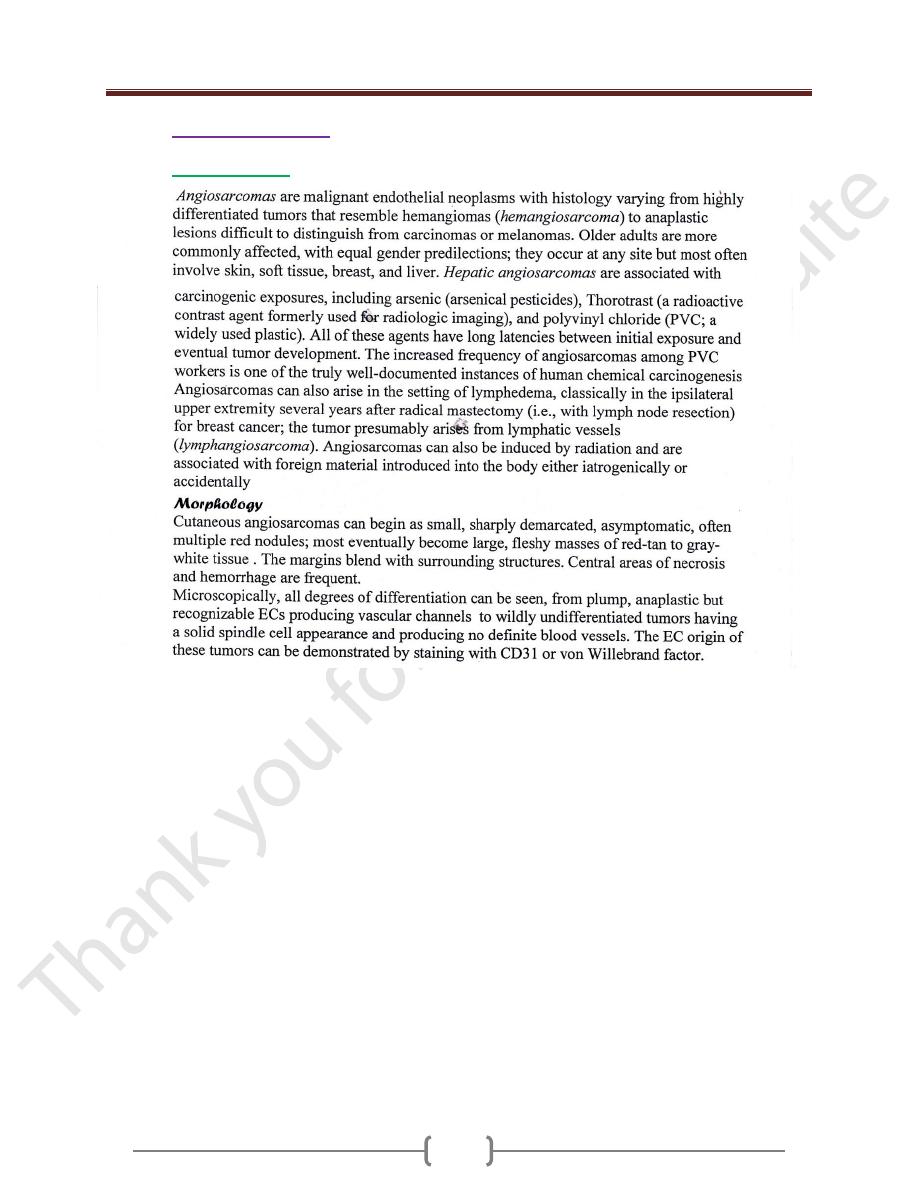
Unit 9: Blood Vessels
149
Malignant Tumors
Angiosarcomas
